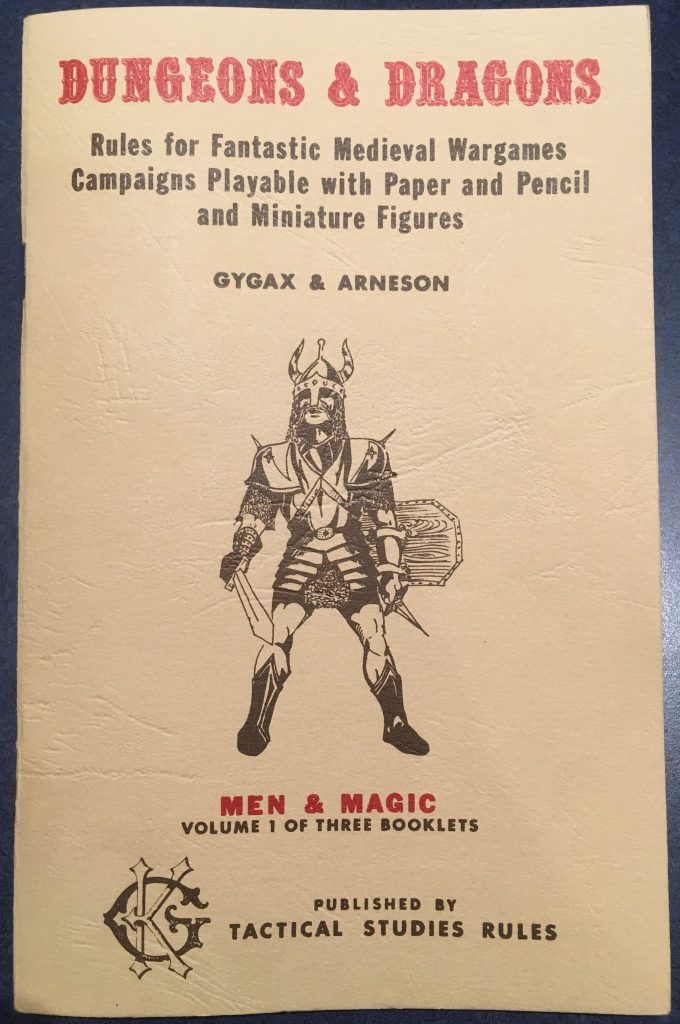
This first booklet is kind of like the Player’s Handbook.
First oddity – it suggests a referee (not yet called Dungeon Master) to player ratio of 1:20. Whaaat?
Next up – we have the 3 main classes – fighter, magic-user, cleric. The thief is a notable absence.
Next, races – Humans, Dwarves, Elves and Halflings (or Hobbits in earlier printings). And a note saying players can play as anything if they want to, even Dragons.
We have 3 alignments, Law, Neutral, Chaos – no Good or Evil.
Then we get a description of the 6 standard abilities, NPCs, equipment, experience points and class levels, hit dice, spell levels, saving throws, clerics turning undead table. All pretty much as they exist today.
For combat, it says you can use the Chainmail rules or an “alternative” system (what we now know as the standard system). The progression is a bit coarse grained, with, for example, fighters of levels 4-6 having the same ‘to hit’ score required.
Another slight difference is hit points – they’re talked about as a maximum amount of damage you can take, rather than an amount remaining – ie starting at 0 you record the damage taken and a healing spell or potion like cure light wounds will reduce your recorded points of damage.
Lastly there’s a large section on spells – all the standard ones we know and love.
Note, if you’re reading the 5th printing or earlier, you’ll get references to Hobbits, Ents, and Balrogs. These were all excised for the 6th, Original Collector’s Edition print. Hobbits became Halflings, Ents became Treants, and Balrogs got cut entirely.